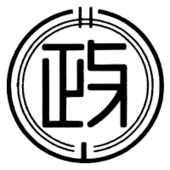Kyosei-kai

The Kyosei-kai (共政会 Kyōsei-kai) is a yakuza group based in Hiroshima, Japan,[1] with an estimated 280 active members and 470 semi-active members.[2] The Kyosei-kai is the largest yakuza organization in the Chugoku region.[2]
History
The Kyosei-kai was formed in May 1964 from seven yakuza clans united by bakuto Tatsuo Yamamura.[3]
Condition
The Kyosei-kai is known for its history of fierce conflicts with various other yakuza groups, and therefore, the Kyosei-kai is thought to be most responsible for creating Hiroshima's "town of violence" image.[4] Notably the Kyosei-kai has been in conflict with the Yamaguchi-gumi, the largest yakuza syndicate, since the early 1960s.[2]
The Kyosei-kai was a leading member of two anti-Yamaguchi federations, the Kansai Hatsuka-kai (formed in 1970) and the Nishinippon Hatsuka-kai (formed in 1989), and has formed a new anti-Yamaguchi federation named the Gosha-kai since 1996 with three other Chugoku-based organizations, the Kyodo-kai, the Asano-gumi, the Goda-ikka, and the Shikoku-based Shinwa-kai.[2]
In popular culture
The Battles Without Honor and Humanity yakuza film series is based on actual 20th-century yakuza conflicts engaged in by Hiroshima yakuza syndicates, particularly the events leading up to the formation of the Kyosei-kai.[4]
Presidents
- 1st (1964–1965): Tatsuo Yamamura
- 2nd (1965–1970): Takeshi Hattori
- 3rd (1970–1987): Hisashi Yamada
- 4th (1990–2003): Isao Okimoto
- 5th (2004–present): Atsumu Moriya
References
- ↑ "Police of Japan 2011, Criminal Investigation : 2. Fight Against Organized Crime" Archived 2011-08-10 at the Wayback Machine., December 2009, National Police Agency
- 1 2 3 4 "The Fourth Kyosei-kai", 20 February 2008, Matsue Joho Center (in Japanese)
- ↑ "1993 Police White Paper Chapter 1 : The Actual Condition of the Boryokudan", 1993, National Police Agency (in Japanese)
- 1 2 "Chitizens standing up against boryokudan conflicts", Yomiuri Shimbun (in Japanese)